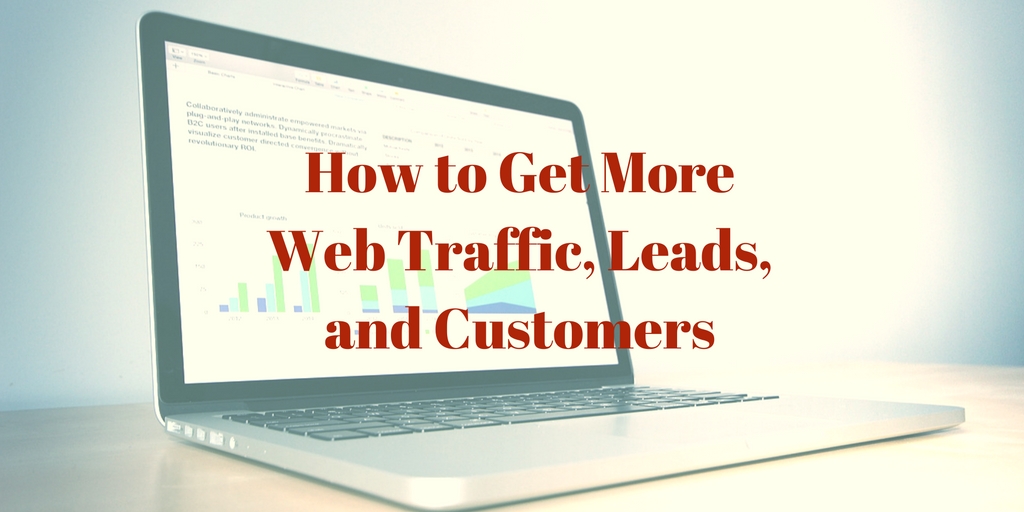
by Fronetics | Oct 4, 2016 | Blog, Content Marketing, Logistics, Marketing, Social Media, Supply Chain
This list of social media articles includes useful information for both people who rarely use social networking sites and for more advanced users.
We’ve been using this space to write about social media a lot lately. That’s partly because so many exciting new developments and enhancements keep popping up. It’s also because we can’t underscore enough how important it is for companies in the supply chain industry to participate in social media.
I thought it would be helpful to revisit some of our recent information, guides, and tips and tricks regarding social media use for B2B marketers. The following list encompasses both general, how-to-type instruction and more detailed advice for more advanced users.
I’ve segmented articles by platform and included a catch-all category at the bottom as well. Don’t see what you’re looking for? Shoot me an email to let me know what social media-related content you’d like to hear about on our blog.
LinkedIn
LinkedIn is the most popular social network for B2B companies. Here’s what you need to know to get started.
Learn about the free and paid methods LinkedIn offers to help you find and recruit new employees.
LinkedIn’s 433+ million member base presents an enormous opportunity for your company to earn new business. Start attracting those members to follow you.
Twitter
One of the top social media sites for B2B marketers, Twitter can help businesses spread brand awareness and communicate with customers.
You may find yourself frequently strapped for quality tweeting material. Here are some ideas to not only fill your feed but to keep your followers interested and engaged.
Leverage insights from Twitter’s analytics dashboard to improve audience engagement, reach, and content development.
We did an experiment to determine the ideal frequency for posting on Twitter. The resulting numbers were abysmal. But that means the experiment worked.
Add stickers to your photos on Twitter to join in on real-time conversations about trending topics and to grow your audience.
Twitter is changing its rules on the 140-character limit for your tweets. Learn what’s going to be different.
Facebook
Facebook Live offers businesses a new, creative platform for engaging customers. This article describes what marketers need to know about it and how to use it.
YouTube
YouTube is a useful engagement tool for B2B marketers who want to reach the social network’s more-than-3-billion users. Learn how to get started in this article.
Get started creating YouTube videos for your business with these easy-to-use tools and ideas for content.
Learn how to improve the reach of your YouTube videos with these strategies for distribution.
Reddit
Reddit is a gold mine for relevant, engaging content to share with your social media followers. Here’s how it works and how you can get started.
Other resources
Fronetics has developed this training specifically for business owners, marketers, and employees looking to learn more about social media and how they can contribute to their company’s success through these networks.
Fronetics has developed a comprehensive report exploring social media use in general and, specifically, within the logistics and supply chain industries.
Businesses are using social media as a strategic tool. This article explains the top three benefits companies in the logistics and supply chain industries can enjoy from participating on social platforms.
Your business should be on social media showing buyers that you know what they want and that your business can provide it.
A cross-departmental social media team can help your company get more out of social networking sites.
Participating in social media is not about earning followers; it’s about building relationships with your current and future customers.
If your social media strategy doesn’t align with your business objectives and target audience, your marketing budget is probably better spent elsewhere.

by Fronetics | Sep 29, 2016 | Blog, Content Marketing, Logistics, Manufacturing & Distribution, Marketing, Strategy, Supply Chain, Warehousing & Materials Handling
Content marketing can help your organization amplify its efforts to drive traffic, improve conversion rates, and increase sales.
A recent survey of over 4,500 marketers at organizations around the globe found that converting leads to customers (74%) and growing traffic to their websites (57%) were their companies’ top marketing priorities. Perhaps not surprisingly, these marketers also overwhelmingly reported that generating traffic and leads was their top challenge. Often our business priorities are the most difficult to achieve.
Enter, content marketing.
Content marketing is a form of inbound marketing in which businesses publish content to attract prospects who are interested in products in services like theirs. This marketing approach can be highly effective in growing brand awareness, generating leads, and increasing sales. In fact, according to the same survey, organizations using inbound marketing were four times more likely to rate their marketing strategy highly than outbound organizations.
Let’s look at one example from the warehousing sector.
Business was decent for Company X. It had experienced positive growth for over a decade, despite lacking a clear marketing strategy. But leadership started to wonder: Are we missing opportunities for growth?
Company X sought a multi-level digital marketing strategy that would help them increase web traffic, generate more leads, and convert prospects to customers. The team hired Fronetics to create and implement such a strategy.
After 24 months, the results were telling: Web traffic increased by nearly one-fifth (19%). Company X tracked 244 high-quality leads directly sourced from its new content marketing efforts. And new business grew by a remarkable 30%.
Content marketing was highly successful for Company X in achieving its business goals of driving traffic and new business. In fact, the organization realized many other positive benefits as well. You can read about more of them, as well as the strategy Fronetics used to get there, by downloading the case study below.

Want to increase traffic to your business’ website and generate more leads and customers? Have you tried content marketing? Here are a few resources to get you started.
Related resources:
Need more help? Contact Fronetics to request a free strategy session.

by Fronetics | Sep 28, 2016 | Blog, Content Marketing, Logistics, Marketing, Strategy, Supply Chain
Companies in the logistics and supply chain industries should take a look at this content marketing infographic.
Content marketing is a form of inbound marketing in which vendors publish digital content to attract customers who are searching for products and services like theirs. If done right, it is highly effective in growing brand awareness, generating and converting leads, and driving sales and repeat business.
If your organization is exclusively using traditional outbound marketing techniques, like advertisements in print publications, you’re missing out on growth opportunities. We rounded up some of the most telling facts about the role of content marketing in today’s B2B purchasing environment for you to consider.
Here are 12 facts about content marketing that your business should keep in mind.


by Fronetics | Sep 22, 2016 | Blog, Content Marketing, Logistics, Marketing, Supply Chain
Companies in the supply chain and logistics industries should take note of these 19 content marketing trends.
Joe Pulizzi of the Content Marketing Institute recently revealed his predictions for the biggest trends in content marketing for 2017. As the leader of CMI, Pulizzi dedicates much of his time discussing where content marketing is heading with enterprise marketers around the world.
Since 88% of B2B marketers use content marketing as a part of their marketing programs, you’ll likely see some of these trends and issues arising among your competitors, your clients, and, ideally, your company in the near future. As you start to strategize for next year and beyond, be sure to consider these ideas in your supply chain marketing plans.
Creation of a real content marketing strategy
We can’t say it enough: Organizations that have a documented content marketing strategy are more likely to be successful than those that don’t. You would never operate a business without 1) creating a strategy, 2) documenting it, 3) following the strategy, and you should feel the same way about your marketing plan. Here are a few resources to get you started:
Native advertising
Native advertising is a paid, content-based promotion delivered in stream, within the same format as the channel the reader (or viewer) is using. Think of sponsored updates on LinkedIn, which look just like regular posts, or when a radio DJ promotes a product within the regular broadcast. I’ll be writing more about native advertising in the coming months and how the supply chain might use this opportunity as part of their content marketing efforts.
Influencer marketing
Forbes describes influencer marketing as, “A nonpromotional approach to marketing in which brands focus their efforts on opinion leaders, as opposed to direct target market touchpoints.” Basically, highly visible people become brand advocates by employing your products or services in their everyday lives. There are earned influencers, influential people who use your product regularly because they like it. And there are paid influencers, who receive compensation for using certain brands. More to come on this topic as well.
Purpose-driven marketing
Companies can appeal to a target audience by promoting their shared interest in a worthy cause through content. Examples from the supply chain include these six companies that are doing well by doing good.
Video and Visual
Video is not just for funny cats and cover artists anymore — it’s the most popular form of content being consumed online. Smart marketers are developing a visual storytelling strategy that offers consistent delivery of valuable content. Consider how your business might utilize features like Facebook Live or channels like YouTube.
Snapchat
Yes — Snapchat. Before you roll your eyes, check out this convincing article, Why Snapchat Will Be Great for B2B Companies, by Gary Vaynerchuk of Vayner Media. Keep your eyes on this social media platform in the coming year.
Facebook
One thing about Facebook you can count on is that it will always be evolving and adding features to keep up with user preferences. Also, Pulizzi is convinced businesses can do better when it comes to promoting content on this platform. Companies should keep a close eye on what’s to come with Facebook in the near future and how organizations are using it to distribute content and generate leads.
Teams and workflow
Take a good look at content production in your organization. Do blog posts go unedited? Are projects frequently late? Is your team clear about who needs to approve what? A strategic, consistent way to track and complete content-based projects can help streamline production and improve efficiency — not to mention quality.
Content strategy (pipes and process)
Developing a strategy that helps your organization scale its content-production efforts, re-purpose existing content across multiple channels, and properly leverage user experience and technology is key to content marketing success.
Mobile
Google announced in May 2015 that the number of searches on mobile devices has now surpassed those conducted on desktops in the U.S. And we know that reality isn’t limited to personal internet use. Evidence suggests B2B buyers are increasingly using mobile devices to do research, make inquiries, and purchase products. If your website and marketing emails aren’t mobile-friendly, your company is missing out the significant share of customers who demand mobile-optimized content. Try these tips:
Content technology
The marketing software market is expected to grow to more than $32.3 billion by 2018. The number of options companies have is almost blinding. Count on content technology to continue to demand a lot of attention — and, potentially, financial resources — in the next few years.
Writing
Josh Bernoff’s recent article in the Harvard Business Review hits the nail on the head: Bad Writing is Destroying Your Company’s Productivity. In a vast sea of crappy content, superior writing and storytelling can make your business stand out, win customer’s trust, and earn new business. Here are some resources:
Integration with sales
Integrating your sales and marketing teams is one of the most impactful ways to leverage content to gain new customers. For example, merging one of our clients’ sales and marketing databases to improve team communications played an important role in helping the company increase new business by 30%.
ROI and measurement
Making a business case for content marketing is one of the top priorities for the majority of B2B marketers year after year. Check out these resources:
Email and marketing automation
Marketing automation can expand your content’s impact, improve conversion rates, generate leads, and drive repeat purchases. Additionally, it can remove cumbersome manual tasks from your content workflow, freeing up your resources to add value to other, more meaningful tasks. Pulizzi says an expert recently revealed to him that companies are utilizing approximately only 10% of the functionality behind marketing automation — meaning, there’s much room for improvement in this area.
Content distribution and promotion
Even the best, most valuable content is worthless if it fails to reach your target audience. Companies are now focusing on the strategic distribution of their content assets to ensure their success.
Executive buy-in
Earning C-suite support for content marketing is a challenge for many marketers in the supply chain and logistics industries. See “ROI and measurement” above for some resources to support your efforts to win executive buy-in.
Global integration
Organizations and their supply chains continue to become more complex and global in scale. This can put a strain on communication, processes, meeting customer needs and expectations, etc. Content marketing strategies should account for the challenges of global operations.
Construction of a media organization
Pay attention to the recent flux of organizations purchasing media companies or properties to become media enterprises. Microsoft’s purchase of LinkedIn comes to mind, as well as Arrow Electronics’ acquisition of a number of technical and media properties from UBM.
Related posts:

by Fronetics | Sep 21, 2016 | Blog, Content Marketing, Marketing, Strategy
To truly gauge the effect of variations in frequency of marketing emails, evaluate the cumulative metrics as well as per-message statistics.
How often does your company send marketing emails? Perhaps you’ve wondered if ramping up the number of messages you send to your database may generate more purchases. But you don’t want to cross the line of bothering people to the point where they unsubscribe or become annoyed with your business.
IBM Marketing Cloud recently released the 2016 Email Marketing Metrics Benchmark Study, which aggregates data from messages sent by nearly 750 companies representing 3,000 brands in 40 countries. It offers interesting insight on metrics like open rates, click-throughs, and mobile metrics.
Marketing emails and the frequency math effect
One key finding from this year’s study involves something called the “frequency math effect.” It first became evident for businesses in the retail and ecommerce sector during the holidays but applies across verticals.
During periods of heavy email volume, certain metrics that determine the effectiveness of marketing emails — i.e., opens and clicks per message — may drop off drastically. But this is not necessarily cause for panic. If you look over the entire sending period, you are likely to see the number of total opens and clicks go up.
Because your subscribers are receiving more emails from you, they tend to open fewer of those messages. But because you are touching your subscribers more often, engagement increases, likely dramatically. This could lead to more conversions and higher revenue.
But there’s more to consider here. List churn metrics — e.g., hard bounces, unsubscribe rates, spam complaints — are also subject to the frequency math effect.
When you are sending marketing emails more frequently, you’ll likely see a drop in your unsubscribe rates, reports of abuse, etc. But don’t celebrate too soon. Again, the cumulative number of these actions will increase.
To better gauge the impact of marketing email frequency, it’s important to look at both per-message statistics and total open, click-through, and list churn metrics for an entire period. By doing so, you’ll be able to more accurately determine whether a change in marketing email frequency has driven an overall net positive or negative impact.
Related posts:







